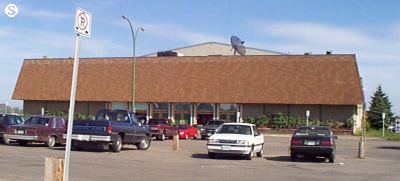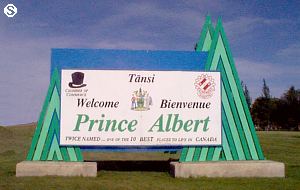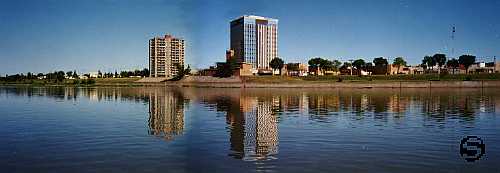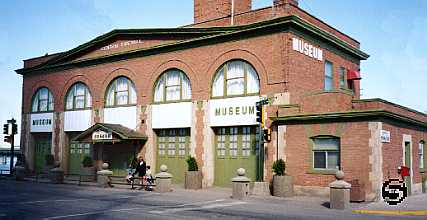



















Prince Albert Raiders
Box 351
Prince Albert, Saskatchewan
306-764-5348

Nick Shultz Mike Wirll Chris Harper Jeff Schmidt

Welcome to Prince Albert

Prince Albert is the 3rd largest City in Saskatchewan. Located in the broad valley of the North Saskatchewan River near the geographical center of the province where the agricultural prairie of the south and the rich forest belt of the north meet. Much of Prince Albert is built on the sloping south bank of the North Saskatchewan River while the north bank provides a spectacular view of mixed forest, typical of northern Saskatchewan.
Prince Albert functions as a service, retail and distribution centre for northern Saskatchewan's resource industries - mining, forestry and agriculture. It is anticipated that this function will continually be enhanced by increased northern resource development. A well developed highway system links Prince Albert with surrounding areas. The City is also the focal point for Northern Saskatchewan's railway network.

The City of Prince Albert is fortunate in being well located within its environment; having a harmony in which the City and its forest setting merge. Situated along the valley of the North Saskatchewan River, Prince Albert has an altitude of 428.25 m above sea level.
Prince Albert experiences a continental climate with variable temperature changes. The daily normal mean temperature varies from 17.4 C in July - -21.5 C in January with recorded extremes from 39.4 C - below -42 C. Prince Albert has an average precipitation of 405.3 mm with 294.3 mm of rain and 119 cm of snow. The average humidity is 61%. The prevailing northwest winds create an average force of 14.7 km/hr. This creates a pleasantly temperate climate of long sunny days and peacefully cool nights in the summer and winters of crisp sunny days with little or no wind. Bright sunshine hours in Prince Albert are among the highest in Canada with an annual average of 2170.6 hrs/yr or about 6 hrs/day.

Settled by the First Nations, the fur traders and pioneers, the spirited history of the City does not lie forgotten. During 1691-92, explorer Henry Kelsey visited the area that was to become Prince Albert, but it was more than a century later when the man honored as being the founder of the City arrived. Reverend James Nisbet landed at the foot of what is now Central Avenue on July 26, 1866 along the south bank of the North Saskatchewan River. Nisbet then proclaimed that the settlement would be named after Prince Albert, the Prince Consort to Queen Victoria.
James Nisbet was a Scot who came to Canada at an early age, graduated from Knox College in Toronto and was called west by the Presbyterian Church in 1862. Physically hardy, skilled from his youth in carpentry and possessing some experience in farming, Nisbet was well fitted to be both pioneer and missionary. By the habitation of Nisbet and his party, the evolution from settlement to City began.
In 1885, the first municipal election took place with Thomas McKay becoming Prince Albert's first mayor. It was also in this year that the community was incorporated as a town. The first train arrived from Regina in 1890 and a small station was built near what is presently known as 3rd Avenue West. Prince Albert was now a part of the outside world and the days of isolation were over. The early 1900's brought rapid growth to the community due to an influx of settlers into the remaining unoccupied agricultural lands surrounding Prince Albert and the establishment of a viable lumber industry.
In 1904, Prince Albert was incorporated as a City and by 1911 the City had quadrupled in acreage. Further annexation in 1912 established boundaries which were virtually unchanged until 1966. The vigorous growth of the post-war era reflected the general prosperity of the province's economy. The City became a sales and service centre to the agricultural communities surrounding it. The forest industry became the 2nd most important industry with the development of the Pulp Mill in 1968. Numerous uranium and gold discoveries in the 1970's and 80's increased employment and stimulated Northern Saskatchewan's economy.